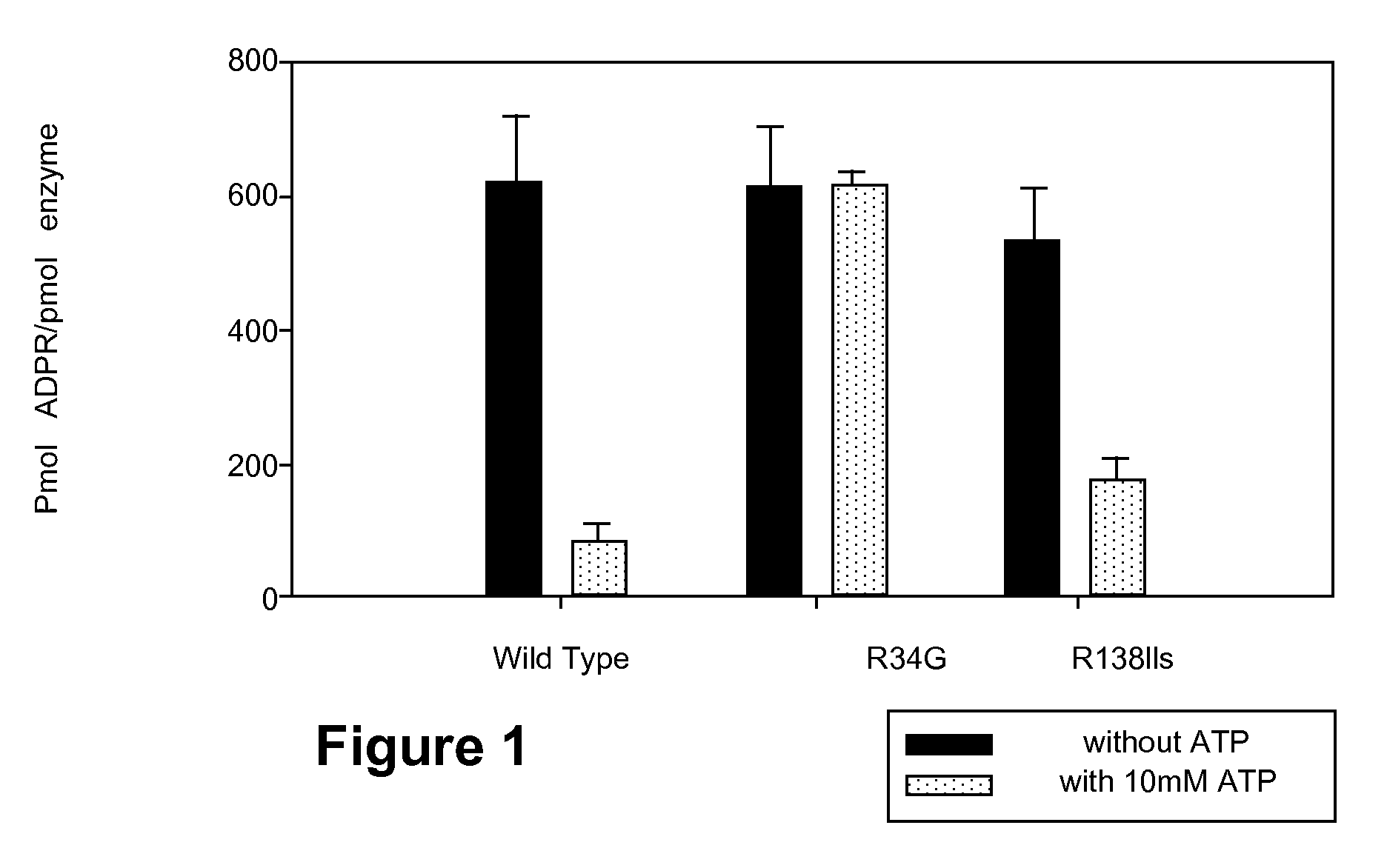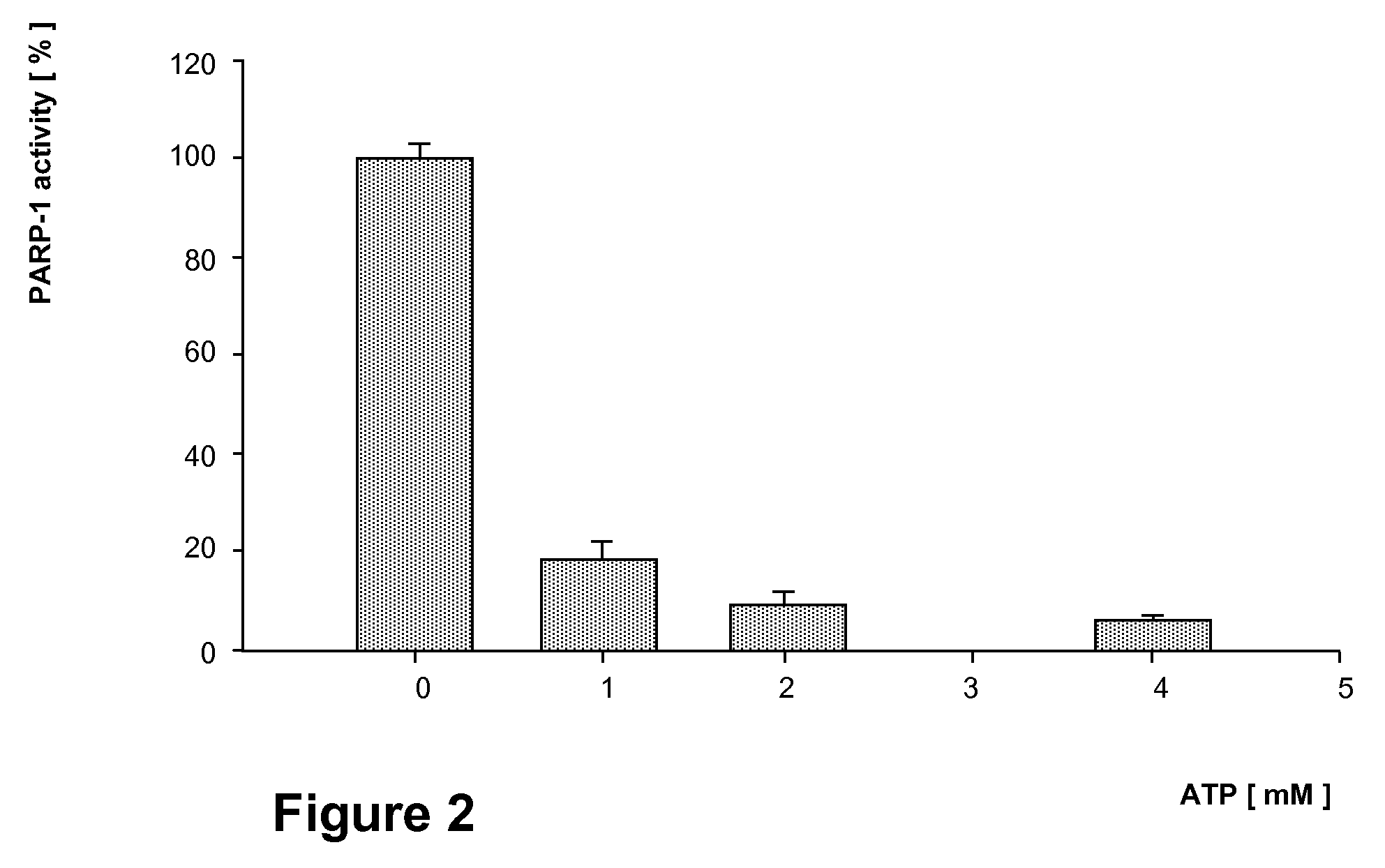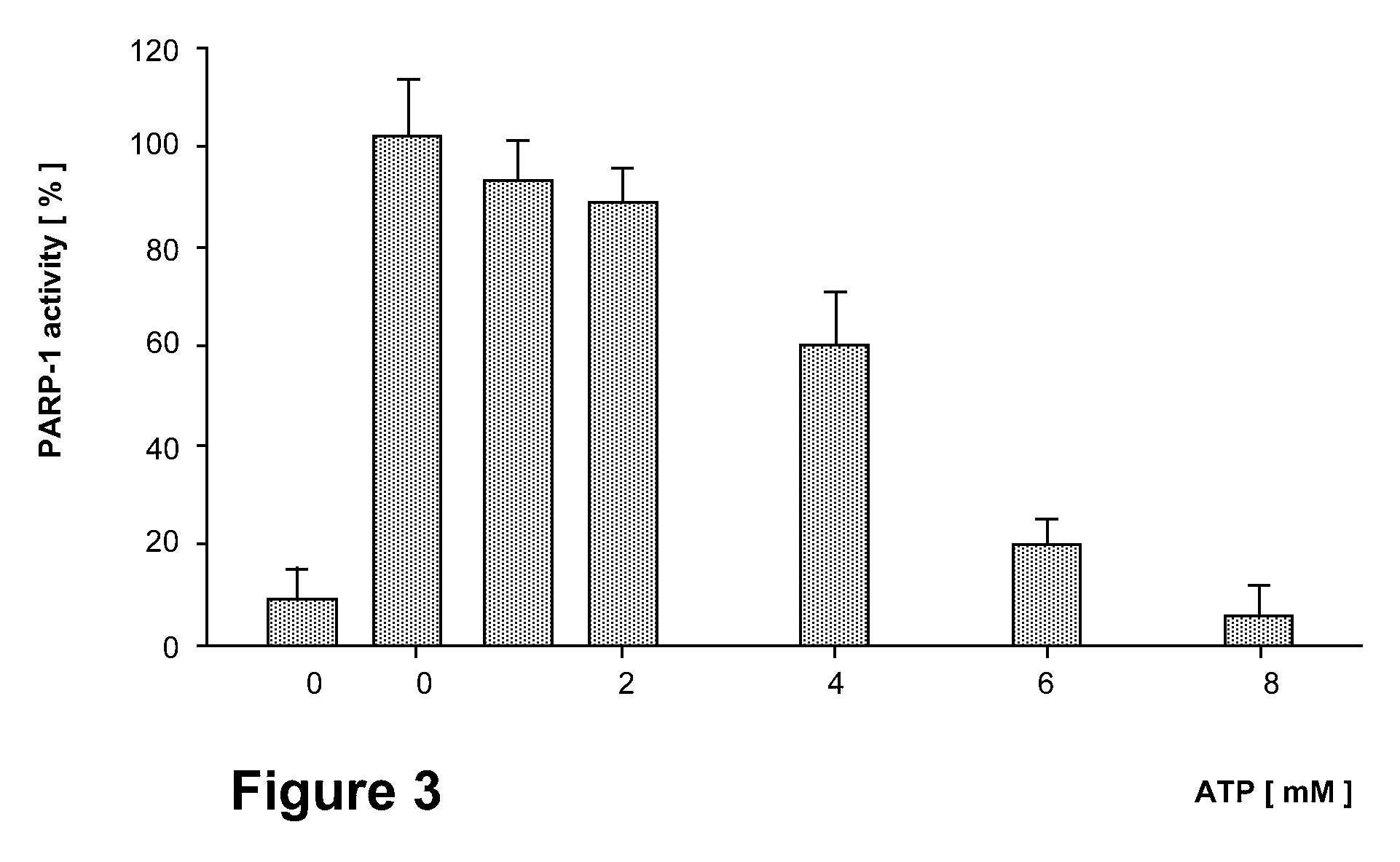PARP Modulators and Treatment of Cancer
a technology applied in the field of parp modulators and cancer treatment, can solve the problems of generating side effects, cell dysfunction or necrosis, and limited in vivo effect of using benzamide analogs
- Summary
- Abstract
- Description
- Claims
- Application Information
AI Technical Summary
Benefits of technology
Problems solved by technology
Method used
Image
Examples
example 1
Enzymatic Activities of Wild Type Arginine-34 and Arginine-138 Mutant PARP-1
[0116]Assays are carried out as described (Kun et al. (2004) Biochemistry, 43:210-216) in triplicate (200 μM 3H labeled NAD+, 28 dpm / pmol, 0.5 pmol PARP-1, 3 mM spermine, pH 7.3 t=7.5 min). Identical results are obtained when ATP is replaced by its non-hydrolysable analog (Kun et al. (2004) Biochemistry, 43:210-216).
[0117]The effect of replacing arginine-34 by glycine in Zn2+ finger 1 of PARP-1 is shown in FIG. 1. While the total enzymatic activity of PARP-1 is not affected by this mutation, the inhibitory action of ATP (or its non-hydrolysable analog) is abolished. These results show that only PARP-1 is sensitive to regulation by ATP. Mutation of arginine-138 to isoleucine in Zn2+ finger 2 has negligible effect on the inhibitory action of ATP, confirming our observation that arginine-34 of Zn2+ finger 1 is the site of ATP interaction with PARP-1.
example 2
Effect of ATP on the PARP-1 Activity of Jurkat Cell Nuclei
[0118]Nuclei equivalent to 2×105 Jurkat cells are pre incubated in the presence of various concentrations of ATP. Then PARP activities are assayed by admixing biotinylated-NAD (5 μM final conc.) and incubating for ten minutes. After separating the proteins on a 8% SDS-PAGE gel, the nitrocellulose-blotted, labeled proteins are detected by incubating with streptavidine-HPO complex (1 μg / ml) and by fluorography. Triplicate results are expressed as densitometric units.
[0119]The action of externally added ATP (or its non-hydrolysable analog) on PARP-1 activity of isolated Jurkat cell nuclei is shown in FIG. 2. A precipitous inhibition of PARP-1 activity is apparent which may be even larger in nuclei than reported for the isolated enzyme since Ki of ATP for the pure enzyme is between 2 to 2.5 mM (3), but in nuclei 1 mM of ATP already inhibits PARP-1 by 80%. This difference may be due either to the higher sensitivity of structurally...
example 3
Effect of BCNU on the ATP Sensitivity of PARP-1 Activity of Jurkat Cell Nuclei
[0120]Experiments in triplicate are carried out as described in FIG. 2, with the exception that pre incubation is done with 400 nM of BCNU for 30 minutes. First bar shows the PARP activity of BCNU non-treated nuclei.
[0121]The consequences of DNA damage by BCNU on PARP-1 activation and the suppression of this pathophysiologically significant process by ATP is illustrated in FIG. 3. The response to DNA damage by BCNU as assayed by PARP-1 activity is completely removed by externally added ATP, demonstrating that the action of BCNU is dependent on the bioenergetic competence of the target cancer cell.
PUM
| Property | Measurement | Unit |
|---|---|---|
| molecular mass | aaaaa | aaaaa |
| OD | aaaaa | aaaaa |
| OD | aaaaa | aaaaa |
Abstract
Description
Claims
Application Information
 Login to View More
Login to View More - R&D
- Intellectual Property
- Life Sciences
- Materials
- Tech Scout
- Unparalleled Data Quality
- Higher Quality Content
- 60% Fewer Hallucinations
Browse by: Latest US Patents, China's latest patents, Technical Efficacy Thesaurus, Application Domain, Technology Topic, Popular Technical Reports.
© 2025 PatSnap. All rights reserved.Legal|Privacy policy|Modern Slavery Act Transparency Statement|Sitemap|About US| Contact US: help@patsnap.com



